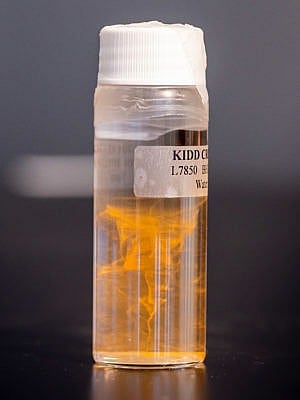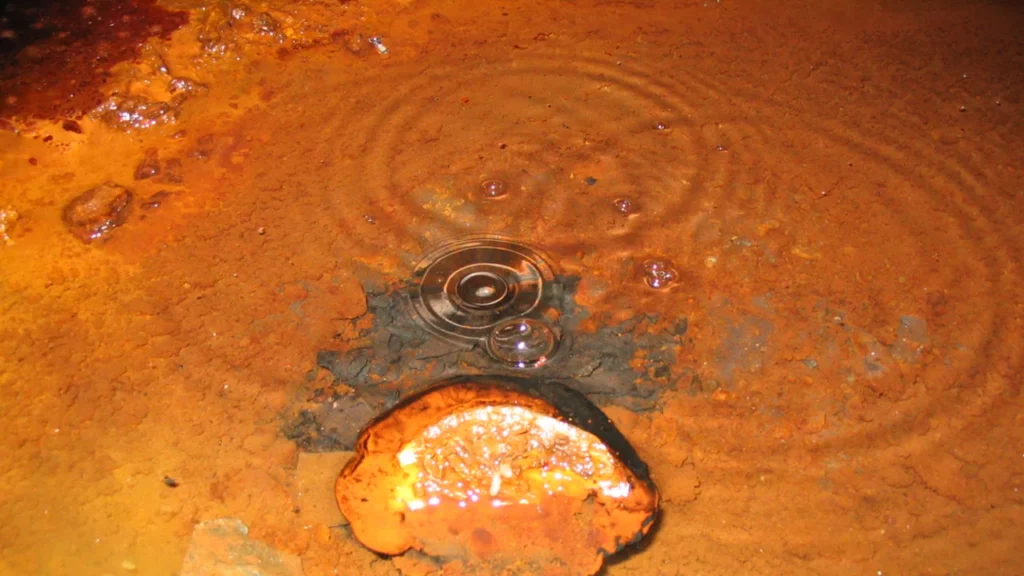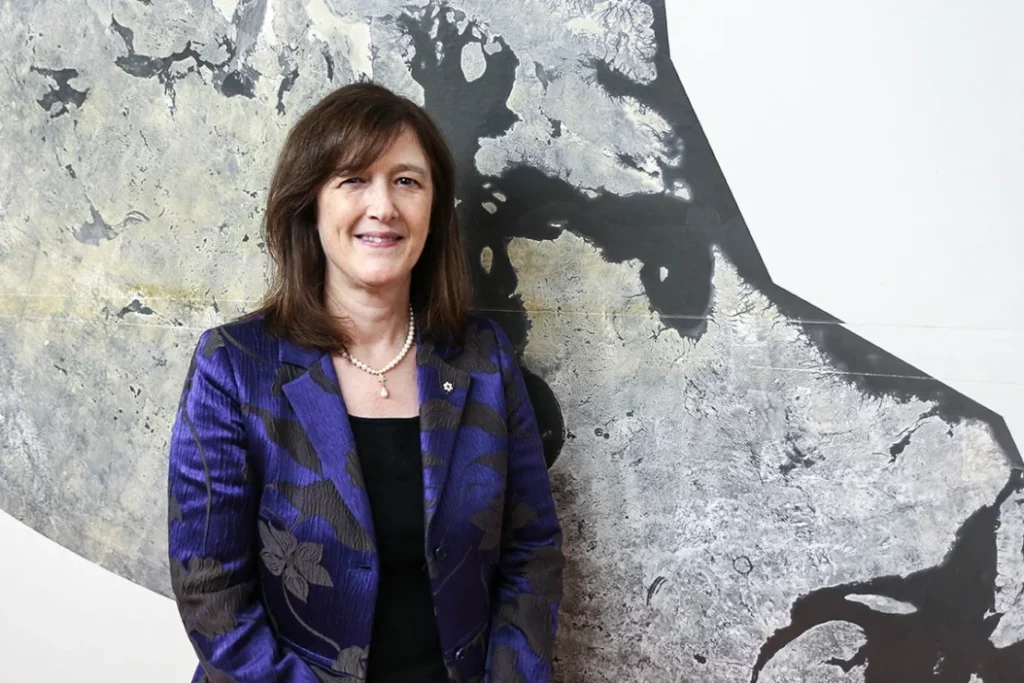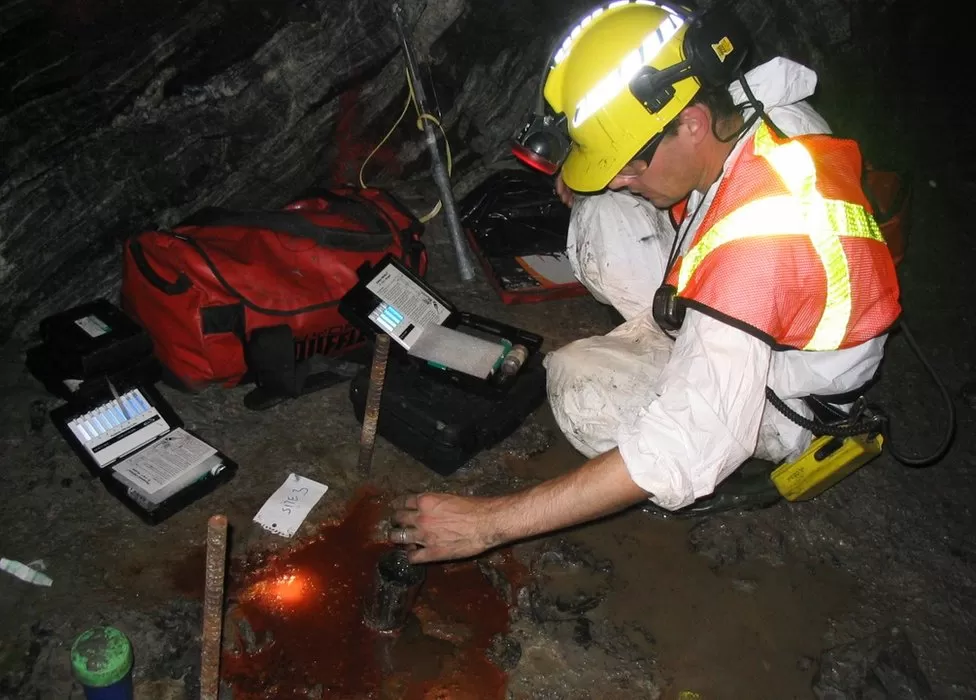In the deep recesses of a Canadian mine, geochemist Barbara Sherwood Lollar stumbled upon the find of a lifetime: water that’s astonishingly over 1.6 billion years old. This ancient liquid has been trapped between the rocks of Ontario’s Kidd Creek Mine for all this time, making it the world’s oldest water by a long shot.
Moreover, scientists also found microbes that have grown in isolation for all this time, hinting at the possibility of alien life in similar caverns well beneath the surface of other worlds in the solar system.
A liquid time capsule

Sherwood Lollar first visited Kidd Creek mine in 1992. With sections more than 3 kilometers deep, Kidd Creek is the world’s deepest metal mine, making it the ideal spot to sample ancient water. However, it would take another three decades before Sherwood Lollard and colleagues could reach a section deep enough to extract the record-setting brine.
During a 2013 expedition, the team from the University of Toronto finally made their way nearly 2.4 kilometers underground inside a cavern flooded with flowing water. The water bubbles out of fractures in the rock or from boreholes that intersect with the fractures.
“When people think about this water they assume it must be some tiny amount of water trapped within the rock,” said Prof Sherwood Lollar.
“But in fact it’s very much bubbling right up out at you. These things are flowing at rates of liters per minute – the volume of the water is much larger than anyone anticipated.”
The first thing that hit them was the musty smell of sulfate.
“It literally is following your nose right up to the rock, to find the crack or the fractures where the water is discharging,” Sherwood Lollar told Maclean’s.
The highly saline fluid — which turned out to be 10 times saltier than seawater — is rich in sulfate, a fingerprint of microbial life. But the real surprise came after they received their lab tests for dating the water. This dating involves sampling ancient gases like helium, neon, argon, and xenon still trapped inside the water, whose isotopes decay at a predictable rate.

Sherwood Lollar knew something was strange when she didn’t get the lab tests in time. When she phoned a British researcher in charge of the dating, she was informed that it might take a while. The lab’s mass spectrometer must be broken, the person at the other end told her, since the measurements were clearly wrong. Except they weren’t.
The lab equipment wasn’t faulty. The 1.6 billion-year-old result that came back was genuine, a good 500 million years older than the previous record-holding oldest water.

Beyond Earth

After some digging around, they also found evidence of life: tiny chemolithotrophic microbes within the water that survive by consuming hydrogen and sulfate. Inside the ancient cavern exposed by the mining operation, the chemistry that produced the sulfate is very similar to mineral-rich hydrothermal vents found on the ocean floor. Many scientists believe hydrothermal vents are some of the best candidates for the origin of life.
“Most life lives on sunlight, but these deep subsurface microbes seem to live on the limited energy they can only get inside the water trapped in these ancient rocks, ” says Long Li, assistant professor at the University of Alberta’s Department of Earth and Atmospheric Sciences.
In fact, the Kidd Creek Mine sits on top of the Precambrian Canadian Shield, dating back 2.7 billion years. It was once an ocean floor. Because oceanic crust is constantly being recycled by plate tectonics, the oldest existing ocean floor dates back to only a few hundred million years. So the Canadian cavern not only provides a time capsule for billion-year-old water, but also offers a glimpse of Earth’s ancient seabed.
And finding energy-rich waters so deep underground alludes to an entirely different class of life found miles beneath the crust. This means there’s a non-zero chance life could be present beneath Mars’ surface. Once a rich ocean world like Earth, Mars is now barren and dry — but its subterranean environment could look entirely different.
“We no longer think of life on Earth as this smear of biology on the surface. Life may be something that deeply permeates our planet,” Sherwood Lollar said.
It’s all super fascinating, but I think all this talk of water has made y’all thirsty to learn the answer to the question that’s on everybody’s mind right now: What does billion-year-old water taste like?
Being a geologist, Sherwood Lollar has licked a lot of rocks throughout her career. This expedition was no different, and she even tasted some of the ancient water off her finger. It’s “very salty and bitter”, she told CNN in an interview. It didn’t exactly age like wine, that’s for sure.
This article originally appeared in 2023 and was updated with new information.









